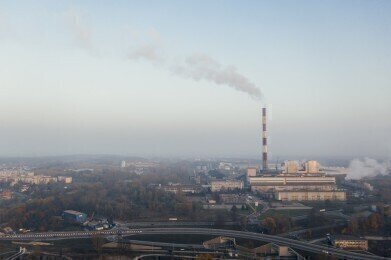Air Monitoring
How Are Gas Emissions Monitored?
Nov 04 2014
Anthropogenic climate change, driven by greenhouse gas (GHG) emissions such as carbon dioxide and methane, is thought by many to be one of the major hazards to life on earth. Before anthropogenic climate change was fully recognised, other emissions were causing concern for atmospheric scientists. Chlorofluorocarbons (CFCs) were causing a hole in the ozone layer, while sulphur dioxide and nitrogen dioxide emissions from coal powered power stations in the UK were having devastating effects in the forests and lakes of Scandinavia as the emissions were converted to acid rain in the atmosphere. Changes in regulations, have helped to reduce the impacts of some of these emissions — but how can we be sure that the regulations are being adhered to?
Emissions limits
One of the tools put into place by many regulatory authorities is a system where companies have to measure and report their emissions. Companies are set emissions limits that they must not breach and it is the individual company’s responsibility to ensure that any emissions they have are below the limit. They meet the limits in a variety of ways including:
- Adjusting the process to reduce emission products,
- Using a scrubber or filter to remove gases or particulates from the stack, and controversially
- A modern approach is to trade or sell the emissions.
Continuous emissions monitoring
The monitoring system that many regulatory authorities have put in place is known as Continuous Emissions Monitoring, or CEM. As the name suggests, companies have to monitor their emissions continuously, and report the emissions to the regulatory authorities. A thorough discussion on CEM can be found in this article: Improving Environmental Safety Through Responsible Monitoring. By using a standard framework it is possible to compare emissions between different countries and companies — the basis behind carbon trading.
How Monitoring Systems Work
There are several simple stages to emissions monitoring that most systems follow.
- Sample. A sample is taken from the exhaust or emissions point using a pump that pumps a representative sample into the CEM system. Some sample preparation may have to take place to reduce moisture and to make sure the sample is not too concentrated for the analysers.
- Separation. Depending on how many analysers are used, the sample may need to be separated into an individual stream for each analyser.
- Analysis. There are various techniques used to detect gas concentrations including: infrared, ultraviolet and GC. All techniques must be calibrated and acceptable to the appropriate regulatory body. Following analysis the sample is vented to atmosphere.
- Data Analysis. The signal from each analyser is collected and analysed by a central computer system and the data recorded.
Does it Work?
By monitoring and actively working to reduce the emissions it is possible to reverse the damage done to our environment. In recent years, due to the removal of CFCs from our processes, the hole in the ozone layer has significantly been reduced. Greater understanding of what we put into the environment can help to preserve it.
Digital Edition
IET 34.2 March 2024
April 2024
Gas Detection - Biogas batch fermentation system for laboratory use with automatic gas analysis in real time Water/Wastewater - Upcycling sensors for sustainable nature management - Prist...
View all digital editions
Events
Apr 22 2024 Hannover, Germany
Apr 22 2024 Marrakech, Morroco
Apr 23 2024 Kuala Lumpur, Malaysia
Apr 23 2024 Kintex, South Korea
Apr 23 2024 Edmonton, AB, Canada


















